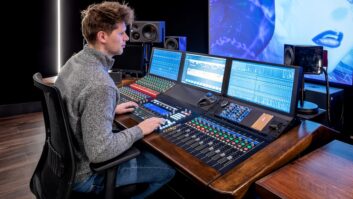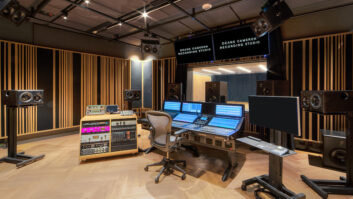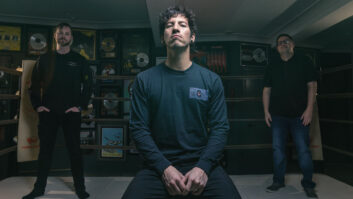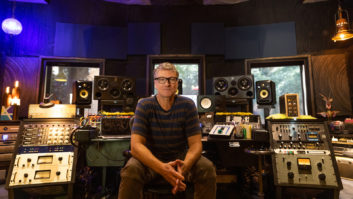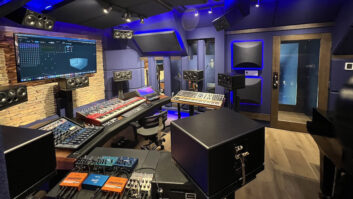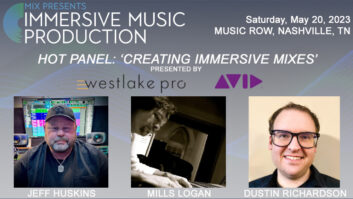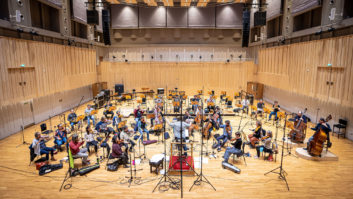The tip-off that Marshall Crenshaw recorded his latest CD, enigmatically titled #447, in his own project room is the name of the studio in the liner notes: Claustro-Phonic Recording. Not exactly a commercial name that’s going to bring in clients. “It’s a little building out behind my house [in Woodstock, N.Y.], so named because it’s a small building and it’s crammed full of equipment,” Crenshaw says. Crenshaw lives in Brooklyn these days, so he can’t exactly pop into Claustro-Phonic in the middle of the night if the recording urge strikes him. But the studio has served him well, and it’s just a pretty car ride away in a spectacularly beautiful part of New York State.
Crenshaw has had an interesting career both in and out of music. His sprightly ’80s albums for Warner Bros. earned him a reputation as a skilled pop singer/songwriter, and for a number of years he seemed to be on the cusp of commercial success, although the great breakthrough hit remained elusive. Away from music he enjoyed a decent acting career (he was in Peggy Sue Got Married and La Bamba, in which he played Buddy Holly). He’s had his songs covered by a number of artists through the years, but the best way to hear his brilliant craftsmanship and his considerable guitar chops are on his CDs, the last three of which have come out on the hip Razor & Tie label.
#447 is his strongest and most varied-sounding disc in years; it’s brimming with bright melodies and intriguing guitar textures. There are even three cool instrumentals! The CD was recorded at Claustro-Phonic, Alex the Great Recording in Nashville (run by musician/producer Brad Jones) and The Shinebox in Manhattan (run by Stewart Lerman). Half of the album was mixed by Brad Jones at Alex the Great. Crenshaw played guitar, electric bass, drums, drum machines, percussion and mellotron, and enlisted a dozen other fine players-including such “names” as guitarist Bill Lloyd and keyboardist David Sancious-to flesh out his tunes. It’s a warm-sounding record-homegrown but fully cooked.
Crenshaw says recording at home the last several years has given him the freedom to make the kind of music he wants without compromise. “In 1993, I had come to the end, thankfully, of my days as a major label recording artist,” he says. “I was pretty exhausted, and what I thought I would like to do, if possible, was rediscover some enthusiasm for record-making and songwriting that I’d lost. I wanted to try to continue making records if I could, but the way I wanted to do it was with total autonomy, and I decided to develop a sort of cottage industry approach. In the late ’70s and early ’80s, I liked the solitary, narcissist, control-freak approach-I’m from that school of record-making. I idolized guys like Les Paul. I always loved having recording equipment, so I thought I’d get the best equipment I could afford and make records on my own, and it’s been great so far.
“The first thing I bought was a couple of ADAT machines and a BRC [controller]. This was ’93 to ’94 when that stuff was coming out. ADATs have changed the world. It’s been a revolution, and I’m part of it. Then I started putting together other pieces of equipment based on things I’d read or things I’d actually used in studios over the years. My taste runs to vintage gear, and I have a bit of that. During the ’80s when I was making records, it seemed like there were hardly any tubes around, and I knew that was a problem. The sounds I’ve always loved were made on tube equipment. The first piece I saw that I picked up was a Drawmer 1960B, which is a unit with a compressor and a couple of mic pre’s and a little instrument preamp section. So that’s been my Swiss Army knife piece of gear that I use probably 50 or 60 percent of the time. Now I also have some Telefunken V76s and some Dakings, which I hardly ever use, and a Manley cardioid condenser mic and one of those Coles 4038s.” He has a Mackie 1604 console and a Pro Tools setup he uses for editing and automating his mixes.
“I think the most interesting piece of gear I have now is an Ampex tape machine I had built for me,” Crenshaw continues. “After having used ADATs for a while, I decided I wanted to get an analog machine of some kind, and I decided to get a 2-track for mixing. I realized that probably 75 percent of the records I really loved were recorded on Ampex tape machines with 350 or 351 electronics, so I started scratching around looking for a machine and what I ended up doing instead was buying the components piecemeal-a couple of 350 preamps from a guy out in South Dakota, and another from a guy in Alaska, and then I took the preamps over to a place in New Jersey called JRF Magnetics, and this guy Noel Mackesock, who’s like their Ampex guy, spent about six months putting this tape machine together. I took the Ampex down to Nashville in a Ford Explorer, and when people saw it, they were bowing down to it! We all loved having that thing. There are some quirky things those amplifiers do that really add to the character of it.”
Crenshaw says he built much of the album up from the drums or from programmed percussion parts, not exactly the typical method of a singer/songwriter. Crenshaw’s drumming is fine throughout, and he had strong opinions on how to mike his kit. “I don’t like to use more than four mics on drums; usually I use fewer,” he says. “My miking technique is like a mishmash. I like to put a Coles down by the bass drum, back from the kit a little ways, and then use a Manley cardioid condenser over the kit under the cymbals-that sounds fantastic. Then, when I want to get elaborate, I use four microphones, and I’ll put the Coles behind the floor tom and point it down at the kit, and I use a lot of compression on that. Then I’ll have an RE20 for the foot, a 57 on the snare and then something overhead, depending on the whim of the moment-a Gefell MP70 on omni, or I have these small-diaphragm condenser microphones called Elations. For some of the tunes, I had a sort of Chess Records sound in my head, and so I went for that, and then using the acoustic bass [played by Brad Jones or David Hofstra] helped make that possible, too.”
Crenshaw also went for a retro sound when it came to reverbs. “I don’t like digital reverb, so I didn’t use any on the record at all,” he says. “I decided to get an Ampex mono machine for tape echo. I found a 351-1 that used to be used by CBS radio news to edit AM radio news programs. And it was perfect, just what I was looking for. Next time out, I want to go to a studio that has a great live echo chamber. I love that Duane Eddy sound,” he adds with a chuckle.
After his occasional disappointments in the world of major label recording, Crenshaw seems to be enjoying his more low-key existence these days. He’s still making fine CDs, he tours periodically, and he’s even broken into scoring work-he wrote the music for a PBS documentary about Yogi Berra last year, and he’s working on a soundtrack for Disney animation. “I keep busy, but I’m trying to balance music with my family life,” Crenshaw says. “Like on the album, I worked on it pretty steadily, but it wasn’t fussed over inordinately. Everything came together nicely.”
